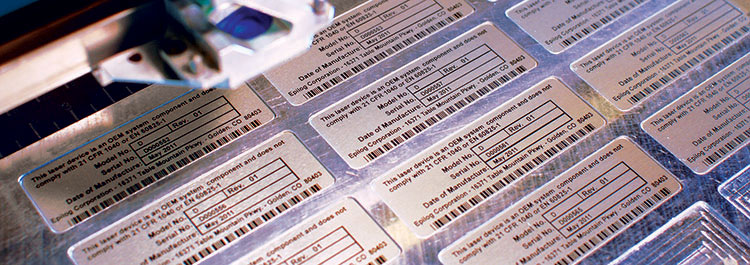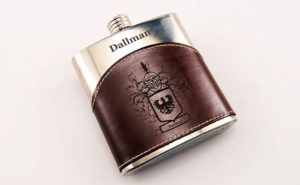
In the laser market, you’ll notice there has been a large increase in the number of dual-source laser system options. The reason for this? The demand is there. There is a very appealing aspect to having more options with one laser system. With a dual-source system, you can choose the best laser source for your application quickly and easily.
For those new to lasers, dual-source systems include both CO2 and fiber laser sources in one laser system.
The CO2 laser is a very versatile frequency of laser and works well with wood, acrylic, plastic, glass, marble, and much more. What the CO2 systems don’t do, however, is engrave depth into metal, which is where the addition of the fiber laser source comes into play.
The fiber laser source generates a laser beam by pumping intense diode light into the end of fiber optic cables that have been doped with ytterbium. The energy from the diode light is absorbed by the ytterbium in the fiber optic cables. The ytterbium then releases the energy in the form of photons that travel down the optic cables. The photons that leave the optic cables create the laser beam. The wavelength of light generated from a fiber laser is 1062 nanometers.
The wavelength of the fiber laser allows you to create a variety of marks on nearly any bare metal such as stainless steel, titanium, and aluminum, as well as engineered plastics. This is especially handy for industrial applications such as laser marking barcodes, data matrix codes, serial numbers, and much more.
Depending on the system, you either can switch out the sources, or they both operate in tandem, and you just choose when you want to use each source.
The benefit of a dual-laser source is the versatility of the system. But what other situations make a dual-source system the right choice for your application?
1. Are you planning on primarily using only one source?
Will you be running the CO2 laser 85% of the time because you’ll only occasionally have the need for the fiber laser? Then the dual-source option is a great way to add the additional material processing capabilities without adding a second machine to your shop floor.

It’s important to remember that with a dual-source machine, you can only use one laser source at a time, so you won’t be able to do both CO2 and fiber jobs simultaneously. If you plan to keep both the CO2 and fiber lasers busy 100% of the time, then purchasing a CO2 system and a fiber system separately may be a better option for you.
2. Do you have limited space for a laser machine?
If you have limited shop floor space, a dual-source system can be a very appealing option. If you have space for only one machine, then a dual-source system is a great way to maximize the capabilities of your machinery without needing to expand your physical workspace.
3. Does your product contain both metal and other materials?

Do you have a product that contains both metal and wood areas that you’d like to customize? Or plastic and steel? How about chrome and leather? Then a dual-source might be the right choice for your application. A dual-source system allows you to engrave with both the CO2 laser (wood, acrylic, leather, etc.) and fiber laser (metal) in a single job sent to the laser.
CO2, fiber, and dual-source laser systems come in a variety of sizes and wattage configurations. Depending on your space and anticipated applications, any of these systems may fit your needs. Regardless of what machine ends up being right for you, going into the purchasing process with the right questions to ask yourself, you’ll be better prepared to decide if a single, dual-source system or two separate CO2 and fiber lasers are right for your situation.



